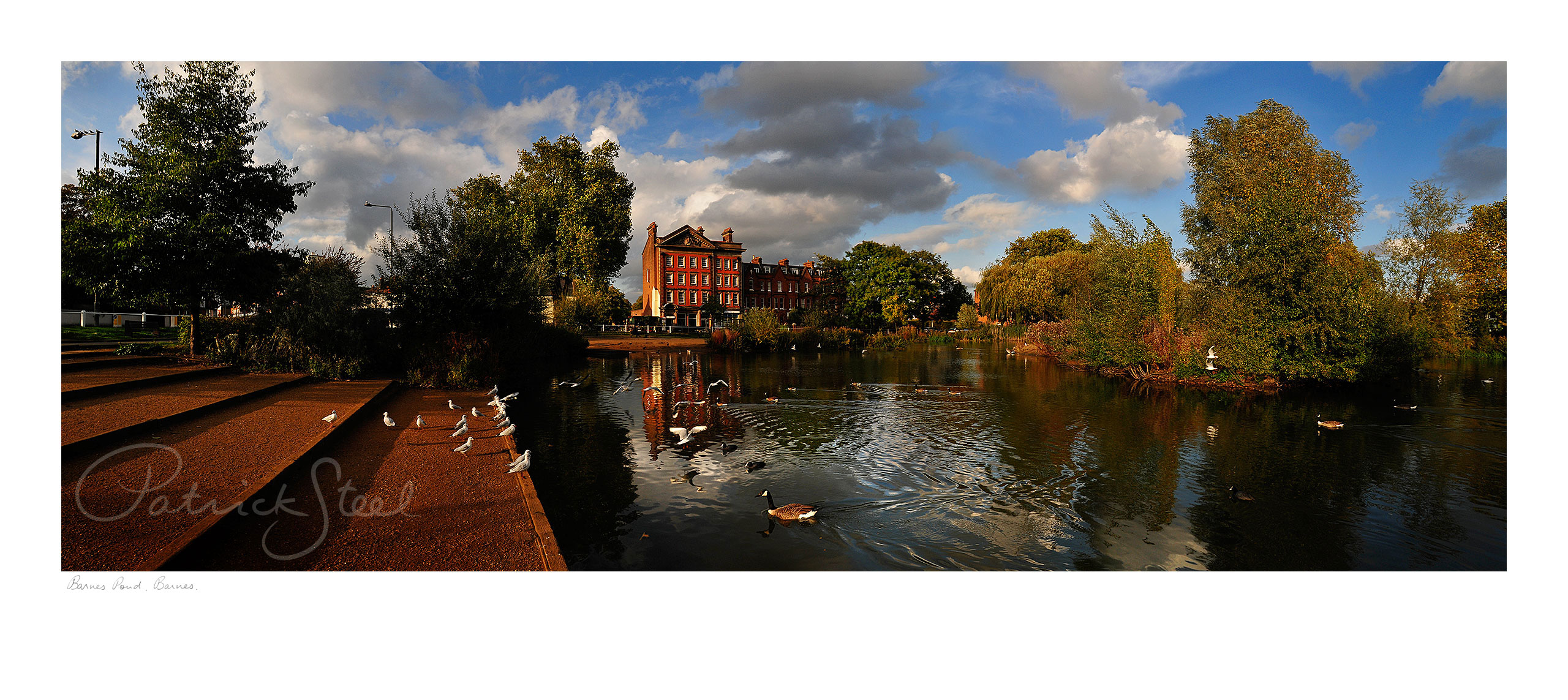Description
A Landscape photograph of Barnes Pond in the village of Barnes near Richmond taken by Photographer Patrick Steel
The listed prices include: Dry mounting onto acid free board, window mounting, titled and signed in pencil and wrapped in a protective sleeve of polypropylene acetate film, ready for framing
Limited edition of only: 50
Sizes: Nine to choose from, please select from the dropdown menu above
Print type: Fine Art Giclée / Kodak Pro Lustre 270gsm Endura Paper
Watermarks: Patrick Steel’s watermark will not be present on a purchased print
Copyright: ©Patrick Steel
✓ Limited edition photograph
✓ Direct from the Artist
✓ Hand signed by Patrick Steel
✓ Free worldwide delivery
✓ Tracked & signed for delivery
✓ Paypal protection
✓ Secure SSL payment protection
✓ Excellent customer care and service
Information: Barnes is a district in the London Borough of Richmond upon Thames. It is located in the extreme northeast of the borough (and as such is the closest part of the borough to central London). It is centred 5.3 miles (8.5 km) west south-west of Charing Cross in a bend of the River Thames
It’s built environment includes a wide variety of convenience and arts shopping on its high street and a high proportion of 18th and 19th century buildings in the streets near Barnes Pond. Together they make up the Barnes Village conservation area where along with its west riverside, pictured, most of the mid-19th century properties are concentrated. On the east riverside is the WWT London Wetland Centre adjoining several fields for the three main national team sports. Barnes has retained woodland on the “Barnes Trail” which is a short circular walk taking in the riverside, commercial streets and conservation area, marked by silver discs set in the ground and with QR coded information on distinctive oar signs. The Thames Path National Trail provides a public promenade along the entire bend of the river which is on the Championship Course in rowing. Barnes has two railway stations (Barnes and Barnes Bridge) and is served by bus routes towards central London and Richmond
Hidden London: This was the place of the barn or barns that stored grain for the manor of Mortlake, and the first authenticated appearance of its name was in Domesday Book. When Barnes became a manor in its own right, under the ownership of the dean and chapter of St Paul’s Cathedral, the manor house was built at Barn Elms and was later enlarged into an aristocratic mansion.
Further inland, Barnes remained a remote farming community for several centuries. The most noteworthy event was a dispute in 1589 that resulted in the men of Barnes refusing to let their Putney neighbours continue to share Barnes Common with them.
Perhaps surprisingly, given its proximity to the Thames, the village developed around the green, which had three ponds. Milbourne House has faced the green since the 15th century, albeit in several incarnations.
The parish had around 200 residents by 1600 and at least two inns by 1637. Barnes Street, now Barnes High Street, was in existence by 1700. Several villas and mansions were built in the 18th and early 19th centuries, notably along the riverside on the Terrace. The population had grown to 860 by the time of the first census in 1801.
The Barnes peninsula was especially isolated until the opening of Hammersmith Bridge in 1827, affording its market gardeners improved access to their primary market and bringing residential potential to the locality later called Castelnau. The arrival of the railway in 1846 opened up the wider district to development. The original station building survives, making this one of the oldest such structures in Greater London
Barnes Bridge was built in 1849 to carry the loop line of the London and South Western Railway across the Thames to Chiswick, bringing a second station to the village. An embankment was constructed to raise the line as it approached the bridge, blocking the riverside path.
At this time, much of the waterfront area was still covered by market gardens. These were sold in 1865 to the British Land Company, which laid out a tight network of terraced cottages.
Over the next hundred years middle-class suburban developments filled the area more densely, together with some later pockets of council housing. St Mary’s church was devastated by a fire in 1978 and has been completely rebuilt, but with great sympathy for its medieval origins.
Much of the village is now designated the Barnes Green conservation area. This is a popular place of residence for established figures in the arts and media, and Barnes High Street and its offshoots have individually-owned outlets specialising in foodstuffs, interior design and fashion. There’s another little cluster of shops and cafés on Church Road, just east of the junction with Grange Road
Only the Grand Pond survives from the original trio at the heart of the village – and it’s now called Barnes Pond. Barnes Fair is held annually on the green on the second Saturday of July




